Pictogram
Poems in Posthuman Akkadian
EPISODE 02
Livestream from Todessa
Camera: Tman
Cast: Totleb & Co.
Editor: Todito
Soundmix: Todonsky Junior
Directed by: T.L.
POEMS IN POSTHUMAN AKKADIAN
written by General Totleben
© Ivan Stanev, executor testamentarius
Read PICTOGRAM h e r e
Pictogram
A pictogram, also called pictograph, or simply ‘icon’ is an ideogram that conveys its meaning through its pictorial resemblance to a physical object. Pictographs are often used in writing and graphic systems in which the characters are to a considerable extent pictorial in appearance.
Pictography is a form of writing which uses representational, pictorial drawings, similarly to cuneiform and, to some extent, hieroglyphic writing, which also uses drawings as phonetic letters or determinative rhymes.
Early written symbols were based on pictographs (pictures which resemble what they signify) and ideograms (symbols which represent ideas). Ancient Sumerian, Egyptian, and Chinese civilizations began to use such symbols over, developing them into logographic writing systems. Pictographs are still in use as the main medium of written communication in some non-literate cultures in Africa, the Americas, and Oceania. Pictographs are often used as simple, pictorial, representational symbols by most contemporary cultures.
Dingir
Dingir (usually transliterated diĝir, pronounced /diŋir/) is a cuneiform sign, most commonly the determinative for “deity”. As a determinative, it is not pronounced, and is conventionally transliterated as a superscript “D” as in e.g. DInanna. Generically, dingir can be translated as “god” or “goddess”.
The sign in Sumerian cuneiform (DIĜIR, ) by itself represents the Sumerian word an (“sky” or “heaven”), the ideogram for An or the word diĝir (“god”), the supreme deity of the Sumerian pantheon. In Assyrian cuneiform, it (AN, DIĜIR) could be either an ideogram for “deity” (ilum) or a syllabogram for an, or ìl-.
The concept of “divinity” in Sumerian is closely associated with the heavens, as is evident from the fact that the cuneiform sign doubles as the ideogram for “sky”, and that its original shape is the picture of a star. The original association of “divinity” is thus with “bright” or “shining” hierophanies in the sky.
The plural of diĝir is diĝir-diĝir.
The Russian-English Dictionary
высший (‘vɨʃːɨj) – high, highest, superior, supreme
смысл (smɨsl) – sense, meaning
это (‘ɛtə) – it, be, it’s, that’s, this, this is
низшее/низший (‘nɨsʃːɨj) – lower, inferior, primitive, undermost
растение (ra’sʲtʲenʲije) – plant, herb
высший смысл – это низшее растение = the higher meaning – that’s a lower (primitive, simple) plant
The Spanish-English Dictionary
masa encefálica = brain matter
The German-English Dictionary
Das waren wir = That was us
Acknowledgements
CDLI, Wikipedia, Encyclopedia Britannica, Sumer

